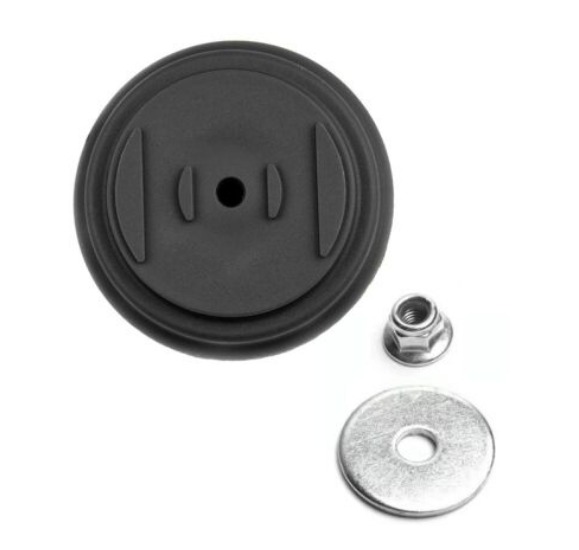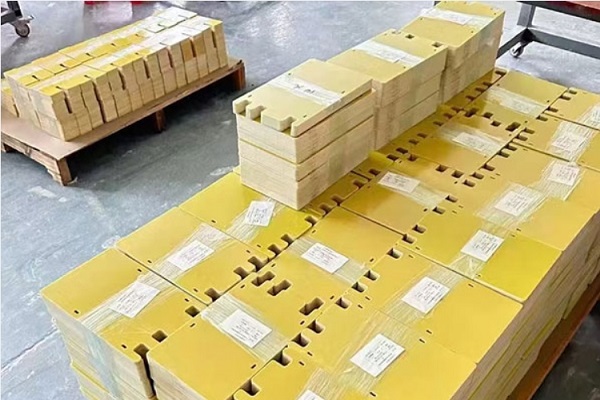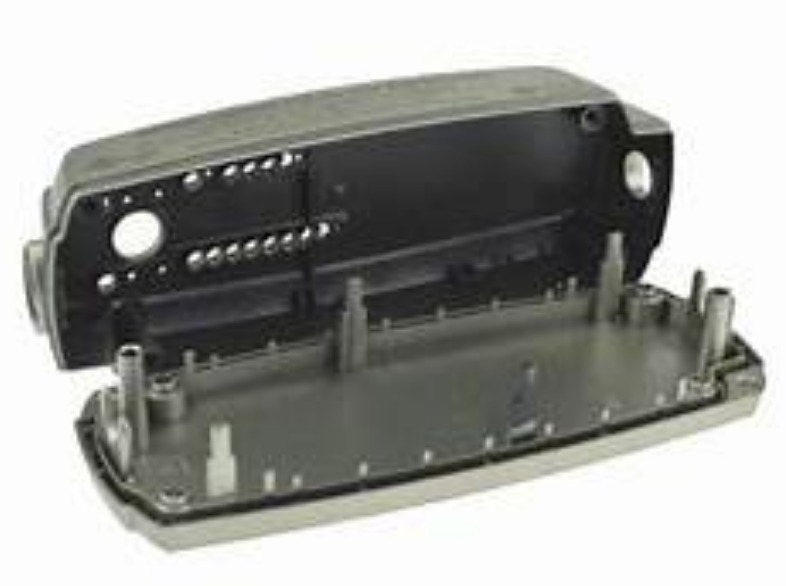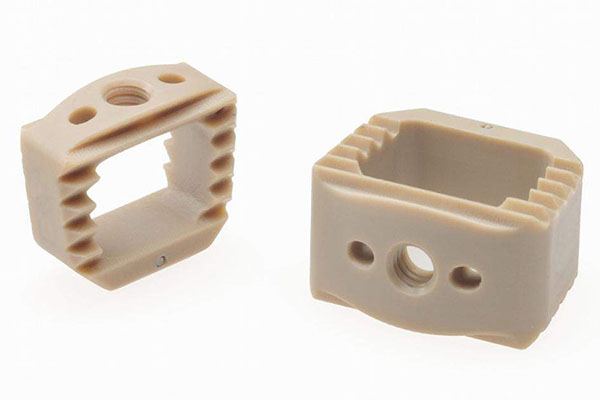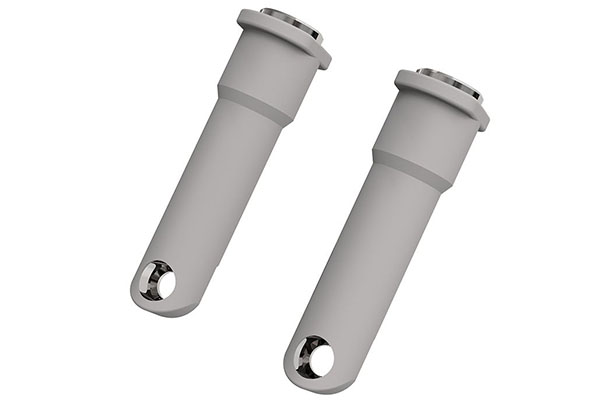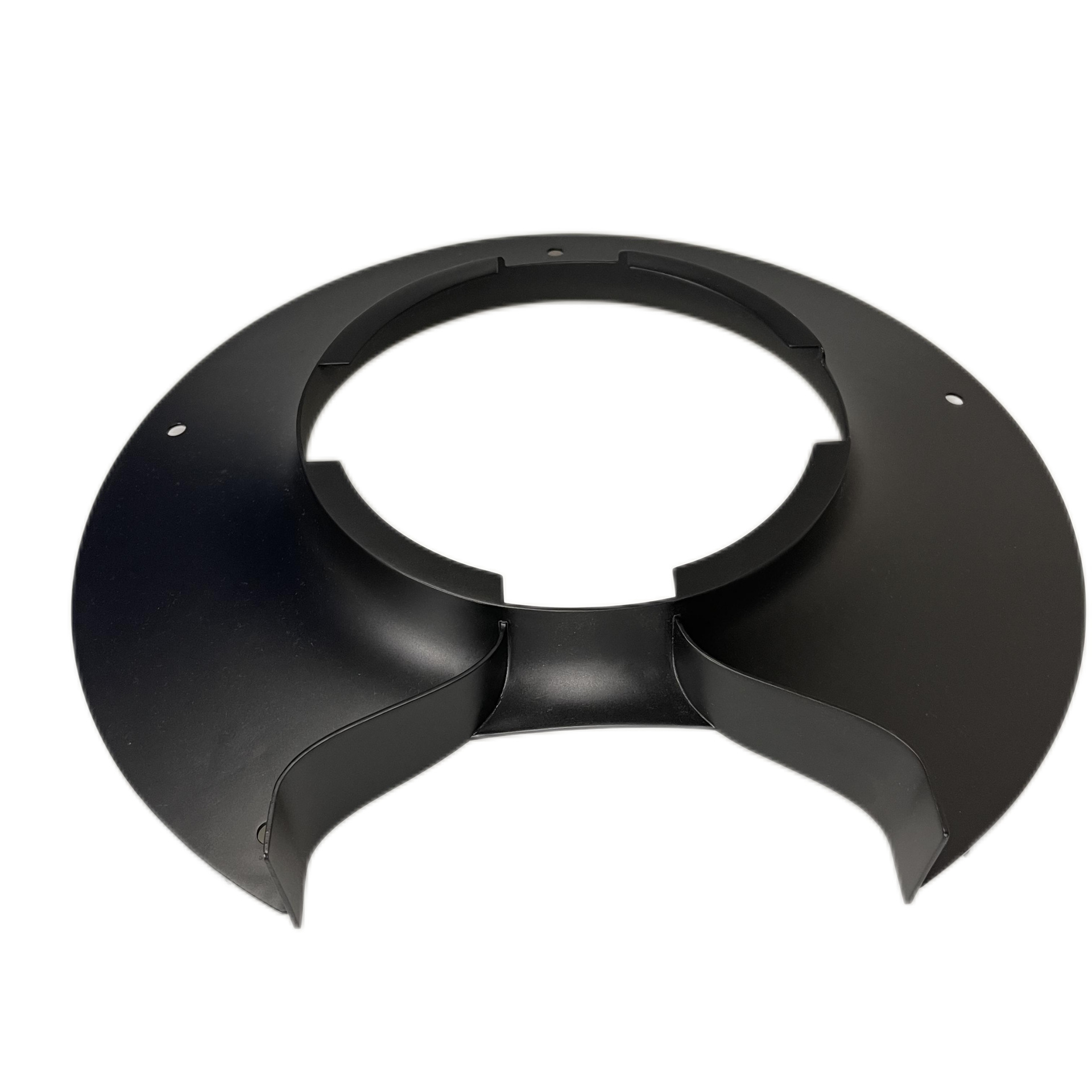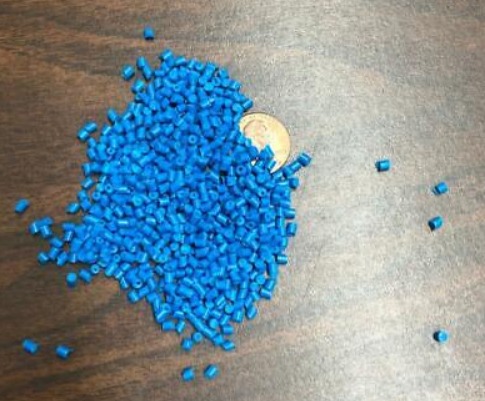Understanding Ejector Stroke Injection Molding
The Basics of Injection Molding
Injection molding is a widely used manufacturing process for producing plastic parts. It involves several key steps. First, the plastic raw materials, usually in the form of pellets, are prepared. These pellets are carefully selected based on the desired properties of the final product, such as strength, flexibility, and heat resistance. For example, if you're making a durable automotive part, you might choose a high - strength engineering plastic like polycarbonate.
The next step is heating and melting the plastic. The pellets are fed into the barrel of an injection molding machine. The barrel is equipped with heating elements that raise the temperature of the plastic to its melting point, typically ranging from 150°C to 350°C depending on the type of plastic. As the temperature increases, the solid plastic pellets transform into a viscous, flowing liquid state, ready for injection.
Once melted, the plastic is injected into a closed mold cavity. The injection is carried out under high pressure, typically between 50 and 200 MPa. This high - pressure injection ensures that the molten plastic fills every intricate detail of the mold cavity, accurately replicating the shape of the desired part.
After injection, the plastic in the mold cavity needs to cool and solidify. This is a crucial step as it determines the final shape and properties of the product. Cooling is usually achieved by circulating a coolant, such as water, through channels within the mold. The cooling time can vary from a few seconds to several minutes, depending on factors like the thickness of the part and the type of plastic used. Thicker parts or plastics with higher melting points generally require longer cooling times.
Finally, once the plastic has fully solidified, the mold is opened, and the finished part is ejected. This is where the ejector stroke comes into play, which we will discuss in more detail later.
Key Components in the Process
Mold: The mold is the heart of the injection molding process. It is typically made of high - quality steel or aluminum, which can withstand the high pressures and temperatures involved. A mold consists of two main parts: the fixed half (also known as the cavity half) and the moving half (the core half). When the mold is closed, these two halves come together to form a precise cavity that defines the shape of the final product. For example, if you're manufacturing a plastic toy, the mold cavity will be shaped like the toy. Molds can be single - cavity, producing one part per cycle, or multi - cavity, allowing for the production of multiple identical parts in a single cycle, which significantly increases production efficiency. Additionally, molds may have features such as cooling channels, which are designed to evenly distribute the coolant for efficient cooling, and ejection systems, which help in removing the finished part from the mold.
Injection Machine: The injection machine is responsible for heating, melting, and injecting the plastic into the mold. It has several important components. The barrel, as mentioned earlier, is where the plastic is melted. The screw, located inside the barrel, rotates to convey the plastic pellets forward, while also applying shear and heat to ensure uniform melting. During the injection phase, the screw acts as a piston, pushing the molten plastic through the nozzle and into the mold cavity. The injection unit also includes a hopper, which is used to feed the plastic pellets into the barrel, and a heating system, which consists of electrical heaters or other heating elements to maintain the required temperature for melting the plastic. The clamping unit of the injection machine is equally important. It provides the force to keep the mold closed during injection and prevents the molten plastic from escaping. Clamping forces can range from a few tons to thousands of tons, depending on the size and complexity of the mold and the part being produced.
Considerations for Mold Designers
Design Principles for Ejector Systems
When mold designers are working on ejector systems for injection molding, several key principles should be adhered to.
Even Distribution of Ejector Pins: Ejector pins, the most common components in ejector systems, should be evenly distributed across the part. For example, in a rectangular plastic part, if the pins are concentrated on one side, it can lead to uneven ejection forces. A study by [a well - known injection molding research institute] found that when ejector pins are evenly distributed in a flat - shaped plastic part with a size of 100mm x 50mm, the ejection - induced deformation is reduced by 30% compared to an uneven distribution scenario. This even distribution ensures that the part is pushed out of the mold cavity uniformly, minimizing the risk of part distortion or damage during ejection.
Proper Selection of Pin Size and Shape: The size of the ejector pins matters significantly. Thinner pins may be suitable for small, delicate parts where a large - diameter pin could cause cosmetic or structural damage. For instance, in the production of small plastic gears with a diameter of 10mm, pins with a diameter of 1 - 2mm are often used. On the other hand, for larger and more robust parts, larger - diameter pins can provide the necessary strength to push the part out. As for the shape, round pins are the most common due to their ease of manufacturing and installation. However, in some cases, such as when ejecting parts with narrow slots or channels, flat - or rectangular - shaped pins (also known as flat ejector pins) may be required. These can fit into the specific geometries and provide effective ejection without causing interference.
Location Based on Part Geometry and Stress Points: Ejector pins should be placed at strategic locations based on the part's geometry and areas with high stress during ejection. In parts with thick - walled sections or areas with complex internal structures, more pins may be needed. For example, in a plastic housing with internal ribs for reinforcement, placing ejector pins near the ribs can help counteract the higher resistance to ejection in those areas. Additionally, pins should be located away from areas where they could cause visible marks on the finished part, especially on the cosmetic surfaces.
Avoiding Common Design Pitfalls
There are several common design mistakes that mold designers need to be aware of and avoid.
Incorrect Pin Placement Leading to Part Deformation: Placing ejector pins too close to the edges of a part or in areas with weak structural integrity can cause the part to deform during ejection. For example, if an ejector pin is placed near a thin - walled section of a plastic container, the force exerted by the pin can cause the wall to bulge or even crack. To solve this problem, designers can use simulation software, such as Moldflow, to analyze the ejection process virtually. This software can predict areas of high stress and suggest optimal pin locations. In some cases, adding support structures or reinforcing the areas around the pin can also help prevent deformation.
Uneven Ejection Forces: Uneven ejection forces can occur when the ejector system is not designed properly. This can be due to differences in the length of ejector pins, variations in the stiffness of the mold material around the pins, or improper alignment of the ejector mechanism. When this happens, the part may be ejected at an angle or experience differential stress, leading to damage. To address this, designers should ensure that all ejector pins have the same length within a tolerance of ±0.05mm. Using high - quality mold materials with consistent mechanical properties can also help. Additionally, regular maintenance and calibration of the injection molding machine's ejector mechanism are crucial to ensure that the ejection forces are evenly distributed.
Lack of Adequate Venting in the Ejector System: During ejection, air can be trapped between the part and the mold cavity, creating a vacuum that makes ejection difficult. If the ejector system does not have proper venting, this problem can be exacerbated. For example, in the production of large, flat plastic panels, without proper venting, the part may stick to the mold, even with a well - designed ejector system. To solve this, designers can incorporate small vent holes in the mold near the ejector pins. These vent holes should be sized appropriately, usually in the range of 0.1 - 0.3mm in diameter, to allow air to escape while preventing plastic leakage. Another option is to use vented ejector pins, which have small grooves or channels along their length to facilitate air evacuation.
Yigu Technology's Perspective
As a non - standard plastic metal products custom supplier, Yigu Technology has a deep - seated understanding of ejector stroke injection molding. We firmly believe that continuous technological innovation is the key to achieving excellence in this field. Our R & D team is constantly exploring new materials and innovative ejector mechanisms. For example, we are researching the use of high - strength, lightweight composite materials for ejector pins, which can not only improve the durability of the ejector system but also reduce the overall weight of the mold, leading to more energy - efficient operation.
In terms of quality control, Yigu Technology has established a rigorous quality management system. From the initial mold design stage to the final product delivery, every step is closely monitored. We use advanced inspection equipment, such as 3D scanners and high - precision measuring instruments, to ensure that the ejector stroke and other key parameters meet the highest standards. Our experienced quality inspectors conduct regular checks during production, and any deviation from the standard is immediately corrected. This strict quality control approach has enabled us to provide customers with high - quality non - standard plastic and metal products, meeting their diverse needs in various industries.
FAQ
What factors should be considered when determining the ejector stroke?
When determining the ejector stroke, several crucial factors come into play. First and foremost is the product size and shape. Larger products generally require a longer ejector stroke to ensure they are fully removed from the mold. For example, a large plastic storage bin with dimensions of 500mm x 300mm x 200mm will need a more extended stroke compared to a small plastic toy figurine. The shape also matters; products with complex geometries, such as those with deep cavities or undercuts, may need a customized ejector stroke to navigate around these features without causing damage.
The mold structure is another significant factor. If the mold has multiple components or a complex ejection mechanism, it can influence the required stroke. For instance, molds with side - actions or unscrewing mechanisms may need a shorter initial ejector stroke to disengage these components first, followed by a longer stroke to fully eject the part. Additionally, the thickness of the part plays a role. Thicker parts may require a more forceful ejection, which could be related to the length of the ejector stroke. A part with a wall thickness of 5mm may need a different ejector stroke strategy compared to a part with a 1mm wall thickness.
How can mold designers ensure the smooth operation of the ejector system?
Mold designers can take several steps to ensure the smooth operation of the ejector system. Proper design of the ejector pin layout is fundamental. As mentioned earlier, evenly distributing ejector pins across the part is essential. Designers should also consider the balance of forces when placing the pins. Using computer - aided design (CAD) software can be extremely helpful in visualizing and optimizing the pin layout. For example, CAD software can simulate the ejection process and show areas where the forces may be concentrated or uneven, allowing the designer to make adjustments.
Optimizing the mold surface treatment can also contribute to smooth ejection. A smooth mold surface reduces friction between the part and the mold cavity, making it easier for the part to be ejected. This can be achieved through processes like polishing, electroplating, or using mold release agents. Polishing the mold surfaces to a high - gloss finish can significantly reduce the coefficient of friction. However, it's important to note that the choice of surface treatment should be compatible with the plastic material being used, as some treatments may react with certain plastics.
Regular maintenance and inspection of the mold are crucial. Over time, ejector pins can wear out, become misaligned, or accumulate debris. Regular maintenance, such as cleaning the ejector pins, checking for wear and tear, and ensuring proper lubrication, can prevent issues that could disrupt the smooth operation of the ejector system. Inspecting the mold for any signs of damage or deformation after a certain number of production cycles can also help in identifying and addressing potential problems before they cause significant issues.
What are the common problems in ejector stroke injection molding and how to solve them?
There are several common problems in ejector stroke injection molding. Ejector pin breakage is one such issue. This can occur due to excessive force during ejection, improper pin material selection, or misalignment. To solve this, designers should ensure that the ejector pins are made of high - strength materials suitable for the application. For example, using hardened steel pins can increase their durability. Regular inspection for misalignment and ensuring that the ejection forces are evenly distributed can also prevent pin breakage.
Product sticking to the mold is another prevalent problem. This can be caused by insufficient ejection force, improper mold release, or high residual stresses in the part. To address this, increasing the ejection force within the limits of the part's strength can be an option. Using effective mold release agents, either chemical or physical, can also help. Additionally, optimizing the cooling process to reduce residual stresses in the part can prevent it from sticking to the mold. For example, adjusting the cooling channels to ensure uniform cooling can help in reducing internal stresses.
